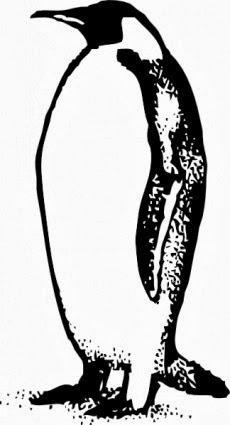Google Penguin Update
 Google Penguin UpdatePenguin is a Google algorithm update that was first announced in April 2012. Aimed at decreasing search engine rankings for websites that violate Google’s Webmaster Guidelines, by using black-hat SEO (Search Engine Optimization) techniques designed to artificially increase the ranking of a web page, by manipulating the number of incoming links pointing to the page. These tactics are often described as link schemes or link networks.
Google Penguin UpdatePenguin is a Google algorithm update that was first announced in April 2012. Aimed at decreasing search engine rankings for websites that violate Google’s Webmaster Guidelines, by using black-hat SEO (Search Engine Optimization) techniques designed to artificially increase the ranking of a web page, by manipulating the number of incoming links pointing to the page. These tactics are often described as link schemes or link networks.By Google’s own estimates, the Penguin update affects approximately 3% of search queries in English, about 3% of queries in languages like German, Chinese, and Arabic, and an even bigger percentage of sites within "highly spammed" niches.
In May 2012, Google rolled-out another Penguin update, Penguin 1.1. This update was predicted to affect less than one-tenth of a percent of all English searches. The principle goal for the update was to penalize websites found to be using manipulative techniques to achieve high rankings. The purpose for Google was to catch excessive spammers, but it seems that some legitimate websites may have been caught with this latest algorithm change.
A few websites lost search rankings on Google for specific keywords during the Panda and Penguin rollouts. It appears anchor text was to blame in many of these cases, as the links pointing to these sites concentrated on only several specific keywords. While the content of the websites may have been satisfactory, as the update focused heavily on the quality of incoming links, the overall impact varied for different websites. Google specifically mentions that doorway pages, those pages that are only built to attract search engine traffic, are against their webmaster guidelines. Regardless of this, many people still use this technique to target additional keywords, but should be mindful that Google has this technique clearly in its sights for action.
Penguin 3 was released in October 2012 and affected 0.3% of queries. Matt Cutts, leader of Google’s web spam team, announced on May 10, 2013 that the next major Penguin update would sport the name Penguin 2.0.
Penguin vs Previous AlgorithmsBefore Penguin, Google released a series of algorithm updates called Panda (see previous section) with the first appearing in February 2011. Panda aimed at lowering the ranking of websites that provided poor user experience. The algorithm implements a system by which Google’s human quality raters determine the quality of a website.
In January 2012, the Page Layout Algorithm update was released, targeting websites with little content, or too much advertising above the fold (the area of a web page that can be viewed without scrolling).
The strategic goals that Panda, Penguin, and the Page Layout updates all share is to bump up and display higher quality websites at the top of Google’s search results. However, sites that were down-ranked as the result of these updates have different characteristics.
Two days after the initial Penguin update was rolled-out Google delivered a feedback form, designed for two type of users; those who want to report web spam that is still ranking highly after the algorithm change, and those who think that their site was unfairly penalized by the update. Google also has a reconsideration request form, available through Google Webmaster Tools for the 700,000 affected sites.
Penguin RecoveryDoes your site use doorway pages to attract more traffic? It could be time to rethink think this strategy as you could be losing more traffic through a penguin penalty than you gain through the extra keywords. Replace these doorway pages with quality unique content that has some value, and target those pages to the extra keywords you need. Where adding fresh valuable content is not an option, these pages should be removed, returning a 404 response code to ensure search engines know this page no longer exists.
Do not bog down the top of your pages with lots of advertising as this leads to a poor user experience. Instead, place your most critical information (text containing your targeted keywords) as close to the top of the page as possible. Advertising should take up a secondary position on the page and not be excessive in number. Too many more than 2-3 ads on a page could start to cost you quality points.
When building incoming links to your site it is important to create a natural looking link profile. The overuse of your main keywords within the anchor text of incoming links will subject you to a penalty, and in some extreme cases, a manual action, or perhaps even the complete de-indexing of the site.
An ideal ratio for link anchor text is to target around a third of your links to use your keywords, another third should be your website or brand name, with the final third of your links using generic text such as click here, more etc.
If you have participated in link schemes, networks, or paid for links, you should start the task of removing these links, ideally at the source, but failing that, via the Link Disavow tool.
For a Penguin Update friendly website, concentrate on building high quality back links only from relevant, well respected, highly ranked, authority websites within your niche. The game is now about link quality and not so much about link quantity. Low quality links can actually harm your rankings, but it seems you do not need too many high quality backlinks in order to rank well.
Published on January 28, 2014 05:41
No comments have been added yet.



